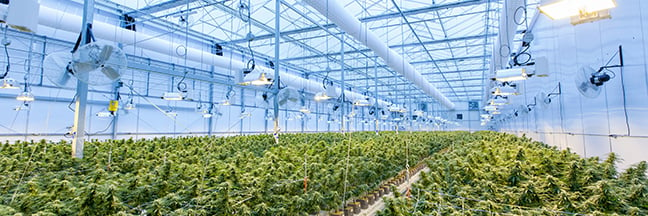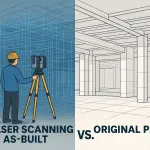Find errors and defects that are hidden beneath the surface
If you’re like me, as a kid we have fantasized about having the ability to look through walls to see if there is any danger waiting for us around the corner. Well now we can do something very much like that. It’s called industrial CT scanning and it is no tiny feat. It has taken a long time for us to arrive at this point where we can really look tight through the things that we make in
order to pinpoint what we’re doing right and where we could come with something that will yield the most favorable results. As such it looks as though many different types of people are getting involved to see how it can benefit them, for both personal and professional reasons.
Industrial CT scanning actually gives us greater opportunity to build things in a better way and with a greater promise of safety for the consumer. Surely if you were to ask anyone who’s already involved with manufacture and design what they would do with this technology you would undoubtedly receive a long pause followed by a bunch of interesting ideas that would be brainstormed right on the spot. This is because there are so many applications that professionals are predisposed to find as analysis is a big part of those that are involved with the production of goods and services.
Companies of all sorts are sure to be the most eager to really get into the nitty gritty by scanning their products in order to ensure quality. Being able to go about making meaningful improvements is so often the name of the game and as such there are sure to be all kinds of small companies that can gain a real edge by using 3D scanning for their benefit. After all it’s hard to say what needs
improvement you don’t have hard data to look through and reach solid conclusions. There are many assumptions that could be made about how scanning with this level of efficacy can lead to the best results, but the truth of the matter is that experimentation and spending time with raw data will tell so much about where we may apply new ideas and of course resources.
In order for companies to make the best products that they can they need to have different roads to consider. How can they be pointed in the right direction if all they do is play the guessing game, a game that more often than not they don’t have the time or excess energy to play. What will be very interesting, and undoubtedly the most lucrative will be the exchange of learned lessons between different design teams and individuals as they get acquainted with the workings and learnings of superior 3D scanning. It isn’t hard to imagine a future where there will be entire libraries dedicated to the lessons learned with industrial CT scanning exercises so that anyone who has an idea of something that they’d like to construct can reference what has already been achieved.
There are a number of cost effective reasons to turn to technology of this nature. It is commonplace for there to be so many regular cases where changing the design of a product has faced so much resource input, so it makes sense to become as informed as possible. There’s a lot of risk that’s avoided when you don’t leave the final approval up to a bunch of suppositions about what it is that makes a product work and last, among other factors. We can eliminate so much waste and in turn ensure that our practices are as environmentally conscious as possible.
As there is a lot of potential in play here it is nothing short of impressive, or expensive. To literally be able look through a product with great detail and discover cracks, porosity, thickness variations, allowing us to really pinpoint where problems are occurring, and most importantly why. This is why industrial CT scanning has a tremendous potential to help ensure profound economic stability for industries such as additive manufacturing in the marketplace. We’re not just talking about the development of newer and better products through processes like additive manufacturing but by applying more analysis in any product that could use a thorough check.
This is why one of the most promising and relevant areas of interest for high quality 3D scanning is with respect to product quality assurance. Although the product in question could be most any product, however those that are printed out stand to gain a lot as they have the most to prove the general public in terms of their validity. Unsurprisingly a lot of people don’t think about this aspect of manufacturing, but the truth of the matter is that it is of capital importance if consumers are to start regarding products that are derived from 3D printing processes in high esteem. When you’re talking about products that many people are going to be purchasing
This seems rather reasonable as there are all sorts of reasons why ordinary folks would be skeptical about the reliability that comes with a 3D printed product. When the things that you rely on have been made utilizing construction methods that society as a whole has had a long history of trusting one tends to have doubts about whether the new construction method holds up.
It’s a pretty stimulating prospect just taking a few moments to think about how we can benefit from looking right through the 3D-printed products that we develop if only for the sake of analyzing quality. This makes a lot of sense from the perspective of innovation, when you think about how experimentation is the biggest approach that has resulted with a plethora of new roads of discovery. Mankind has had a long history of arriving at new inventions by adapting previous research that focused on other areas and this looks to be shaping up with high-end industrial CT scanning.
In large part there is also oftentimes safety issues that might very well be irresponsible to ignore. While everything might look just fine and dandy on the surface of things, and even when it comes down to performance, hidden errors such as crack and casting/molding flaws could be present but out of sight that could cost the consumer who purchases dearly. The inspiring thing is that there are all kinds of applications that are sure to come along thanks to more adept understanding about how a design truly is at its most important and revealing levels.
As engineers who are reading this are sure to surmise, one of the biggest areas that this technology is sure to be in great demand is in prototyping. It is the biggest target for this technology as a company can more confidently support the manufacture and distribution of something that has passed a industrial CT scan test with flying colors.
In order to appreciate how this type of scanning can help with respect to quality, one needs to understand that when it comes to additive manufacturing the errors that occur are very often simply not visible. As such it isn’t too hard to imagine a scenario where everything looks fine on the outside, but in reality there is something compromising in the final product that ends up overlooked. The most common culprits are cracking and unwanted voids that lead to considerably less integrity. The challenge of locating these multiply as the product that is being dealt with increases in complexity, and obviously oftentimes this means that mistakes are much more costly.
So we have so much to gain and should encourage businesses to at least look into the wonders of industrial CT scanning, it may just evolve their business and their products.







